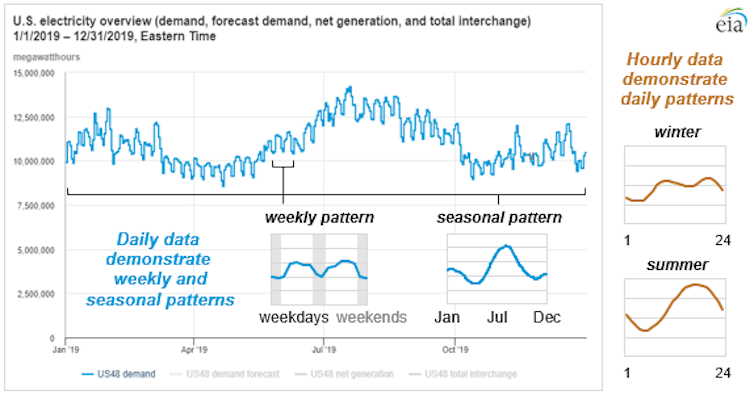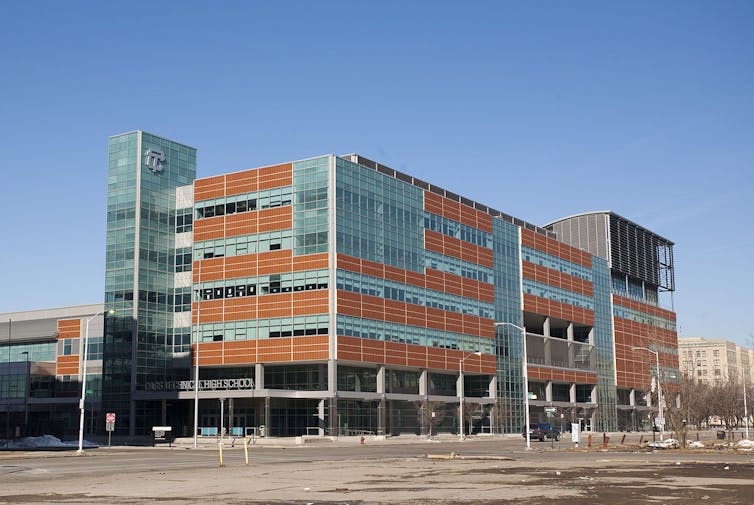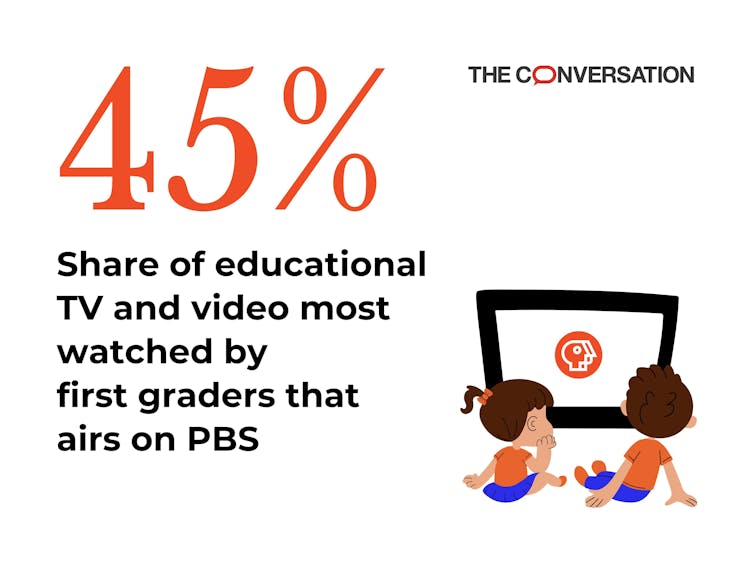Source: The Conversation – in French – By Julien Rault, Maître de Conférences en linguistique et stylistique, Université de Poitiers
La formule est bien connue : « C’est du bon sens ! » Au quotidien, une telle injonction peut paraître juste. L’enjeu est toutefois différent lorsqu’il s’agit de discours politique. Dans le champ démocratique, le « bon sens » irrigue aujourd’hui la moindre prise de parole et vient supplanter le cadre idéologique, refusant toute confrontation d’idées.
Que rétorquer face à l’évidence sans appel du « bon sens » ? Qu’opposer à la rhétorique du consensus, au discours du « Ça va de soi » ? Avec le « bon sens », nul échange, nulle controverse, nulle spéculation. Ici règnent en maîtres la norme et le normal ; Descartes, on le sait, en fait la chose au monde le mieux partagée. L’abbé Girard, quant à lui, nous indique que, contrairement au jugement, à l’esprit ou à l’entendement, le bon sens est une faculté qui transcende les distinctions sociales pour « convenir avec tout le monde ».
S’il sent bon la logique et la volonté générale, le bon sens sent aussi la morale. Roland Barthes, dans l’Usager de la grève, parle en effet du « bon sens » comme d’un mixte de morale et de logique, qui substitue à l’ordre politique et social un ordre présenté comme naturel.
L’interprétation s’efface devant l’évidence. La formule est donc bien un mot d’ordre implicite, une sommation instaurant sans le nommer un ordre du monde autant qu’une parole sans réplique. Mais d’où ce mot d’ordre tient-il sa puissance d’imposition ? Et quel rapport entretenons-nous – en France notamment – avec cette disposition d’esprit qu’on appelle « le bon sens » et, plus étroitement, avec l’expression elle-même, qui resurgit ces dernières années dans les discours et slogans politiques, tous bords confondus ?
Un bon sens français
En France, le « bon sens » témoigne d’un imaginaire bien nourri politiquement. Et si l’on suit le leitmotiv de l’Union des Français de bon sens (UFBS), parti politique de droite fondé en 1977, il serait même devenu le « vrai symbole de la France » – le clip vaut le détour. Et, à en croire les images de terroir qui accompagnent chacune de ses interventions sloganisées, le « bon sens » des campagnes est aussi un bon argument marketing. La publicité pour le Crédit agricole a abondamment puisé dans cet imaginaire de la ruralité et de la proximité.
Évidemment, il est permis de douter d’une aptitude spécifiquement française au bon sens. Mais force est de constater que la notion est particulièrement bien implantée dans notre pays. Les trois conférences d’Henri Bergson, réunies sous le titre le Bon Sens ou l’esprit français (1895), en attestent : une longue tradition française habite l’expression, qui vient fédérer autour d’une aptitude supposément commune et d’une spécificité culturelle.
Politiquement, le « bon sens » appartient-il exclusivement à un camp ? À gauche, on le trouve très tôt dans des journaux progressistes. Le Bon Sens, journal républicain qui paraît de 1832 à 1839, se propose ainsi, selon Louis Blanc, de faire appel à « l’intelligence du peuple ». On le rencontre également dans les discours syndicaux : André Bergeron, syndicaliste FO, publie en 1996 Je revendique le bon sens, quand la Fédération des Travailleurs du Québec fait campagne en 2019 autour de l’expression « le gros bon sens ». En 2016, La France insoumise (LFI) reprend l’expression à son compte en lançant la chaîne YouTube « Le Bon Sens », sous l’impulsion d’Antoine Léaument, à l’époque responsable de la communication numérique de Jean-Luc Mélenchon.
Le bon sens est-il de droite ?
La formule reste toutefois l’apanage de la pensée de droite, dans la filiation de Pierre Poujade qui en avait fait l’élément central de sa « philosophie ». On la retrouve aujourd’hui en abondance dans le discours des républicains (LR) et du Rassemblement national. Marine Le Pen, en décembre 2010, en revendiquait sans détour l’incarnation : « C’est le vrai choix d’une autre politique. J’incarne le bon sens. » En mai 2019, elle réitérait en en faisant l’élément constitutif de sa politique : « Cela fait vingt ou vingt-cinq ans que l’on parle du bon sens, ça a toujours irrigué notre conception de la politique. »
En 2017, François Fillon l’érigeait en mot d’ordre, suivi par Éric Ciotti qui affirmait, en 2022, vouloir être le « candidat du bon sens ».
En 2019, le « bon sens » formait encore l’élément de langage fédérateur de l’extrême droite française et italienne pour les élections européennes : il se retrouve aujourd’hui dans les discours de Giorgia Meloni qui souhaite « révolutionner la normalité » en proposant « des petites choses de bon sens ». En 2025, la « révolution du bon sens » est le motif litanique de Donald Trump à l’orée de son nouveau mandat.
Un bon sens extrême
Un tel succès est à mettre d’abord au crédit de la formule elle-même, qui active un imaginaire antisystème et anti-élite, assez proche de la pensée populiste.
Si cette dernière reste assez difficile à définir, l’invocation du « bon sens » peut apparaître finalement comme l’un de ses axiomes les plus probants. Sa fréquence actuelle s’explique aussi par le discrédit massif jeté sur l’idéologie, laquelle se doit de céder la place au réel : le « bon sens » rejoint alors la constellation des mots-consensus qui étouffent toute ambition progressiste et utopique. Enfin, l’incantation du bon sens permet surtout d’atténuer la radicalité de certaines idées. C’est l’une des fonctions actuelles du common sense, martelé par l’outrancier Donald Trump.
La substitution contemporaine du « bon sens » aux traditionnels réalisme et pragmatisme dans le discours de gouvernement peut alors se comprendre comme la manifestation langagière d’une métamorphose populiste du paysage politique.
Depuis 2020, la formule est largement utilisée par des personnalités proches du macronisme, à l’image de Jean-Michel Blanquer. Celui-ci prônait, en réponse à un mouvement lycéen d’opposition aux codes vestimentaires imposés dans les établissements scolaires, une « position d’équilibre et de bon sens ». Et prenait soin d’ajouter : « Il suffit de s’habiller normalement et tout ira bien. »
Emmanuel Macron est également friand de la formule, étayant son plaidoyer pour la réforme des retraites avec cette sentence : « Je pense que tout le monde a du bon sens dans notre pays. » En janvier 2017, alors en campagne présidentielle, il affirmait vouloir « réconcilier l’ambition avec le réel » et défendait un « projet de bon sens ».
L’usage présidentiel de l’expression offre une parfaite illustration de l’émergence de ce que Pierre Serna a nommé très justement « l’extrême centre ». Cette expression en apparence oxymorique permet de qualifier la radicalisation d’une pensée et d’une action politiques dites modérées et de raison, abritant sa violence symbolique et réelle sous les étendards discursifs de l’évidence.
Mot-masque et mot d’ordre
Relevant d’une parole euphémisante, le « bon sens » fait figure de mot-masque. Derrière son pseudo-rejet de l’idéologie se cachent des orientations tout à fait idéologiques, aux relents poujadistes parfois flagrants. Interrogé sur le travail de chercheurs et les études réalisées par l’Insee qui montraient une stagnation de la délinquance, Gérald Darmanin avançait ainsi en mai 2021 : « J’aime beaucoup les enquêtes de victimation et les experts médiatiques, mais je préfère le bon sens du boucher-charcutier de Tourcoing. » Avant d’inviter journalistes et concitoyens, de façon éloquente, à ne pas « nier le réel ».
Contrairement au réalisme, pour lequel on peut constater la présence récurrente de tournures qui tendent à le redéfinir pour mieux l’asséner (« le réalisme, c’est… », « par réalisme je veux dire… »), on rencontre beaucoup moins d’énoncés cherchant à préciser ce que l’invocation du « bon sens » implique ou signifie.
Le bon sens échappe ainsi encore plus facilement à la spécification : il s’impose avec autorité, puisqu’il est bon, évident, à la portée de tout un chacun. Pointe extrême du réalisme, il instaure une vision unique du monde social et politique, étouffant toute possibilité d’un débat démocratique, dont l’essence se fonde sur l’exact opposé : l’explicitation des points de vue, la confrontation des idées.
Argument de ceux qui n’en ont pas ou plus, le mot d’ordre du « bon sens » est la traduction langagière d’une forme de perversion du politique. Il est le reflet d’une tendance contemporaine qui vise à déresponsabiliser l’acteur. En dépolitisant l’action, il permet ainsi de neutraliser le conflit et de disqualifier toute forme d’opposition.
Dès lors, il n’est pas question d’envisager cette formule (et ses voisines) pour ce qu’elle serait supposée dire réellement : l’efficacité rhétorique et plus exactement manipulatoire d’une expression augmente à proportion de son flou sémantique. Il s’agit plutôt d’interroger l’usage politique qui en est fait, la façon dont elle se manifeste dans les discours qui la convoquent et la commentent. À ce titre, le « bon sens » est bien un moyen de polariser et de politiser et, ce faisant, témoigne d’un positionnement qui, quoi qu’on en dise, reste éminemment idéologique.
![]()
Julien Rault ne travaille pas, ne conseille pas, ne possède pas de parts, ne reçoit pas de fonds d’une organisation qui pourrait tirer profit de cet article, et n’a déclaré aucune autre affiliation que son organisme de recherche.
– ref. Le « bon sens » en politique : analyse d’un mot d’ordre contemporain – https://theconversation.com/le-bon-sens-en-politique-analyse-dun-mot-dordre-contemporain-257311
















